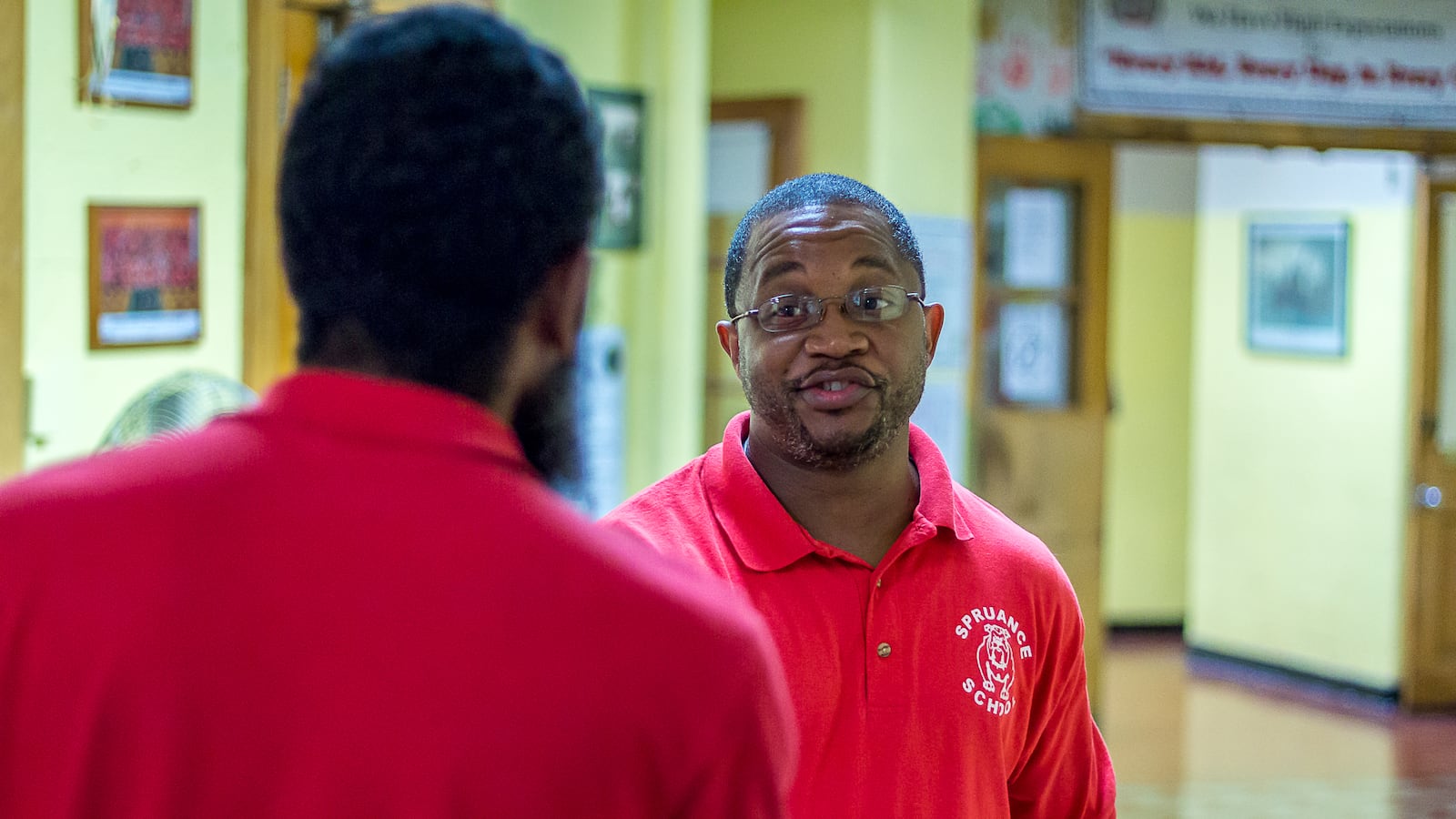This article was originally published in The Notebook. In August 2020, The Notebook became Chalkbeat Philadelphia.
At Spruance Elementary School in the Oxford Circle neighborhood, immigrant children got a jump start over the summer, learning science and English and bonding with teachers and one another.
“Children who were shy, who couldn’t navigate the language, as they built up English proficiency, they became more and more vocal. The smiles on their faces said it all,” recalled principal Kwand Lang.
At Folk Arts-Cultural Treasures Charter School (FACTS) in Chinatown, students, including immigrant newcomers, played games and learned school rules and expectations during the first two weeks of school. Classwork could wait, said the teachers; community-building was the aim.
“Getting to know your kids and what they need is what’s most important,” said Lucinda Megill, a teacher at FACTS.
And at Eastern College in St. Davids, west of Philadelphia, the multicultural education class is in high demand, said adjunct professor of education Sandra Cerniglia.
“We talk about how students need to be aware of each other’s beliefs and traditions and practices,” she said.
Through efforts large, small or whole-school, educators are finding ways to embrace their newest arrivals from around the world. Such approaches pay off, they say, for all students.
“This school is really a microcosm of what our kids are going to experience,” said Lang.
“You can’t look at the world just as this limited space right here, not in this internet era. The world is at their fingertips. Here, you have every flavor.”
There are 31 languages spoken at Spruance, and about 30 percent of the school’s 1,550 students receive English for Speakers of Other Languages (ESOL) services.
At FACTS, where about two-thirds of students come from homes where a language other than English is spoken, the goal is inclusion. The school opened with the special mission of serving Asian immigrant students.
The message to newcomers, Megill said, is this: “As much as we can, we want you to be with your classmates.” If they’re never in class, she said, “they get this feeling, even at a young age, that there’s something wrong.”
Even the protocol during the first two weeks of school has special value.
“The routines help them know what to expect. It lowers anxiety,” said Megill.
Learning about other people’s cultures is pervasive at FACTS. All students study Mandarin. They learn about the music, dance and traditions of other cultures.
At FACTS, “a good number of teachers and staff speak the language of our students and look like our students,” said Megill, “and that matters.”
That’s the case, too, in District and charter schools where Latino culture is the common denominator and a draw for immigrants. Those schools include Southwark Elementary, Mariana Bracetti, Eugenio Maria de Hostos, Esperanza Academy, Antonia Pantoja and Pan American.
At Spruance, multicultural day in May is the biggest event of the year.
“We eat food from every country. The kids explain the dishes, then we do the sampling,” said Lang.
Cerniglia, at Eastern, is an ESOL teacher in a Montgomery County district and herself an immigrant, arriving from Germany at age 12 speaking German, Spanish and some English. She and her brother were among the few immigrants in their school near Allentown in the 1990s, but the demographics are changing, both in cities and the suburbs.
“And it’s not just one culture, or one ethnicity. We really have great variety in all the schools and children from all sorts of backgrounds,” she said.
Teachers are studying multiculturalism, schools routinely celebrate children’s heritages, and cultural awareness clubs have become an extracurricular option in some schools.
“The population is changing so much,” Cerniglia said, and schools are responding.
Putting the well-being of English language learners at the forefront is essential, the educators agree.
“We need to start where students are, and welcome and appreciate the culture they come from, instead of making them feel like alien fruits,” said Ellen Somekawa, FACTS executive director.
Connie Langland is a freelance education writer who writes frequently for the Notebook.


